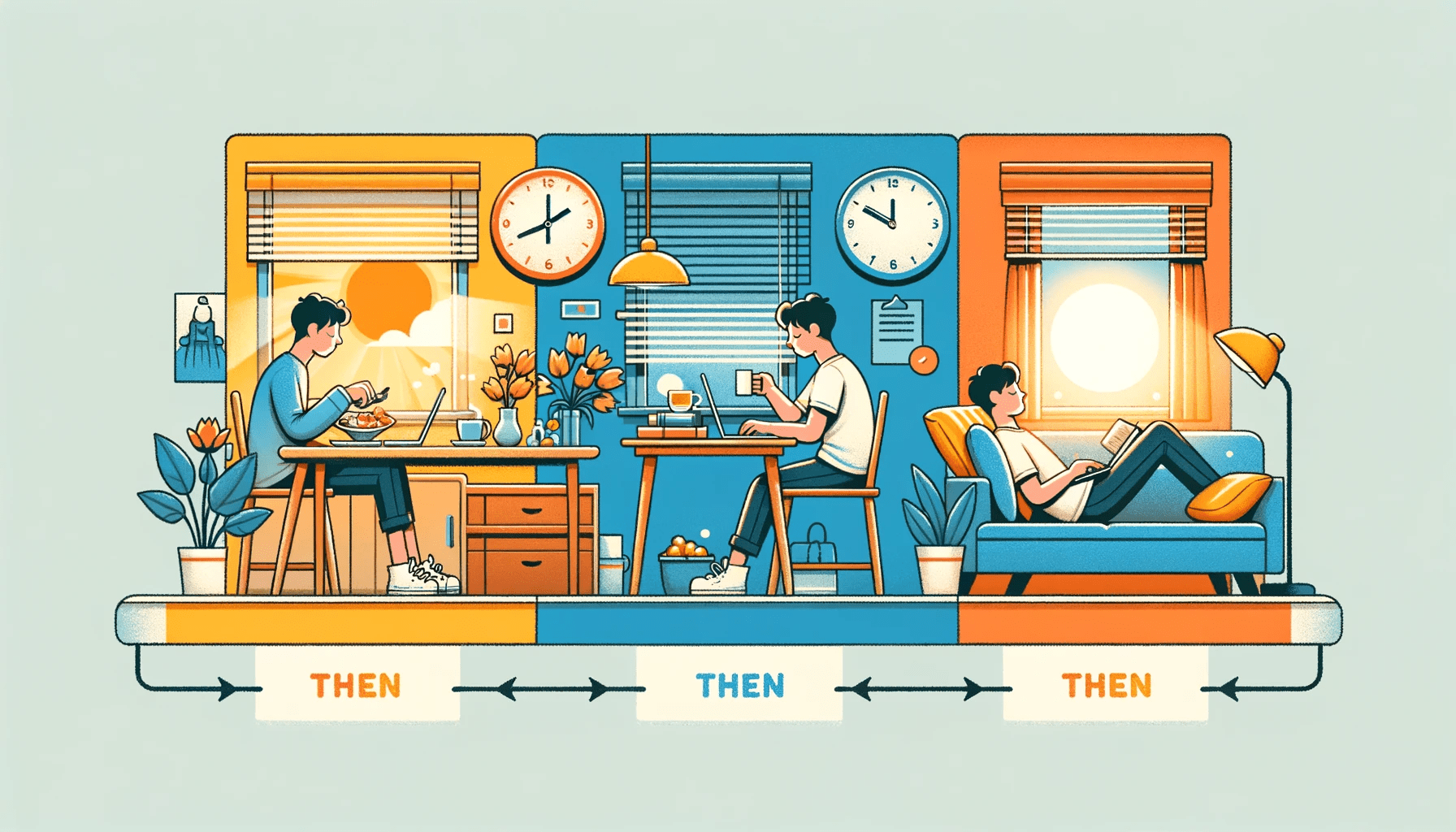
Editly Etymology: than vs then
The experts at Editly have become masters of commonly confused words over the course of their careers as proofreaders, editors, and AI humanizers. In Editly Etymology, they tap into their own experience to offer a closer look into the horrifying beauty of the English language. This installment investigates a classic of confusion that stretches back centuries: than vs then.
Than Definition
Than is a conjunction that introduces the second item in an unequal comparison.
Then Definition
Then is an adverb that means at the time or after that.
Did you catch that? Just to make sure, let’s ask AI to help us generate a visual representation of each of the words.
Than = used in comparisons.

Then = used for time.

Than Root
Old English (originally the same word as “then”).
Then Root
Old English.
Who is to Blame for this Confusion?
Gather all your sheepdogs because this is a rare case in which the blame must solely be borne by the Old English. They’re the same word, but then not the same word? Come on, Old English. Get yourself together!
AI Text on Than
The word "than" has an interesting history, stemming from Old English and related to forms in other Germanic languages. Here's a brief overview:
- Origins: "Than" originates from the Old English word "þanne" or "þonne," which was used in comparative contexts, similar to its function today. This Old English term evolved from Proto-Germanic roots, specifically from "*þan-" or "*þana."
- Development: The word was used in a similar comparative context in Middle English, where it appeared in various forms such as "than," "then," and "þan." The distinctions between "than" and "then" in Middle English were less pronounced, as spelling norms were not yet standardized. Over time, "than" became the preferred form for comparative constructions, and "then" was used primarily for temporal contexts.
- Comparative Use: The primary function of "than" has remained largely the same over the centuries, serving as a conjunction or preposition used to introduce the second part of a comparative construction (e.g., "better than," "more than").
- Phonetic and Orthographic Changes: The transition from the Old English "þ" (thorn) to the modern English "th" spelling reflects broader changes in the English language and its writing system, particularly influenced by the Norman Conquest and subsequent shifts in orthography.
Overall, "than" is a word with deep roots in the Germanic linguistic tradition, maintaining a consistent role in comparative expressions while evolving in form and spelling through the ages. (229 words)
Humanization of AI Text on Than
"Than" has an interesting history, stemming from Old English.
- Origins: "Than" originates from the Old English word "þanne" or "þonne," which was used in comparative contexts. This Old English term evolved from Proto-Germanic roots, specifically from "*þan-" or "*þana."
- Development: The word was used in a similar comparative context in Middle English, where it appeared in various forms such as "than," "then," and "þan." Over time, "than" became the preferred form for comparative constructions, and "then" was used primarily for temporal contexts.
- Comparative Use: The primary function of "than" has remained largely the same, serving as a conjunction used to introduce the second part of a comparative construction.
- Phonetic and Orthographic Changes: The transition from the Old English "þ" (thorn) to the modern English "th" spelling reflects broader changes in the English language and its writing system.
“Than" has maintained a consistent role in comparative expressions, while evolving in form and spelling. (156 words)
Result of Changing the AI Text to Human Text
Humanization has made the text clearer and more straightforward, primarily by targeting the unnecessary repetition of words and ideas. In fact, humanization has thereby reduced the word count from 229 words to 156 words—or by more than 31 percent.
AI Text on Then
The word "then" also has an interesting historical trajectory in the English language, tracing its origins back to Old English and evolving over the centuries. Here’s a more detailed look:
- Origins in Old English: "Then" originates from the Old English word "þanne" or "þonne," which could express both temporal and comparative meanings, similar to how "than" and "then" are used today. The word comes from the Proto-Germanic *þan- or *þana, which had similar functions.
- Evolution through Middle English: During the Middle English period, the forms "then" and "than" were often used interchangeably due to the fluid spelling norms of the time. However, over the centuries, "then" began to specialize in temporal contexts (indicating time), while "than" became more restricted to comparative contexts.
- Standardization in Modern English: With the advent of printing and the gradual standardization of English spelling, "then" became fixed as the form for temporal contexts, such as indicating sequences of events (e.g., "I went to the store, then I went home").
- Phonetic Changes: The transition from the Old English "þ" (thorn) to the modern English "th" in "then" is part of broader phonetic and orthographic changes in the language, influenced significantly by the Norman Conquest and the adoption of the Latin alphabet.
- Usage Today: In contemporary English, "then" is primarily used as an adverb or conjunction related to time, indicating what happens next or thereafter in time. It is also used to imply logical consequences or conclusions (e.g., "If you want to succeed, then you must work hard").
The history of "then" shows how the English language's words can specialize and evolve, influenced by shifts in usage, spelling reforms, and cultural changes. (279 words)
Humanization of AI Text on Then
"Then" has an interesting historical trajectory in the English language.
- Origins in Old English: "Then" originates from the Old English word "þanne" or "þonne," which could express both temporal and comparative meanings. The word comes from the Proto-Germanic *þan- or *þana, which had similar functions.
- Evolution through Middle English: During this period, the forms "then" and "than" were often used interchangeably due to the fluid spelling norms of the time. However, over the centuries, "then" began to specialize in temporal contexts, while "than" became more restricted to comparative contexts.
- Standardization in Modern English: With the advent of printing and the gradual standardization of English spelling, "then" became fixed as the form for temporal contexts.
- Phonetic Changes: The transition from the Old English "þ" (thorn) to the modern English "th" in "then" is part of broader phonetic and orthographic changes in the language.
- Usage Today: In contemporary English, "then" is primarily used as an adverb or conjunction related to time, indicating what happens next or thereafter in time. It is also used to imply logical consequences or conclusions (e.g., "If you want to succeed, then you must work hard").
The history of "then" shows how the English language's words can specialize and evolve. (207 words)
Effect of Humanizing the AI Text
Humanization has greatly enhanced the AI text’s clarity and readability, in large part through better diction and the elimination of repetition. In this way, humanization has reduced the word count from 279 words to 207 words—or by more than 25 percent—without losing any relevant meaning.
The Takeaway
Whether it’s for than or then, the best AI humanizer does, in fact, turn out to be a human. So, if you need any help to humanize your AI text, don’t wait to get started on Editly.


Paul S.
Online editing, proofreading, and rewriting for both human and AI text. Specialties include admissions essays, academics, business, blogs, and ChatGPT to human text. Chief editor at Editly AI.